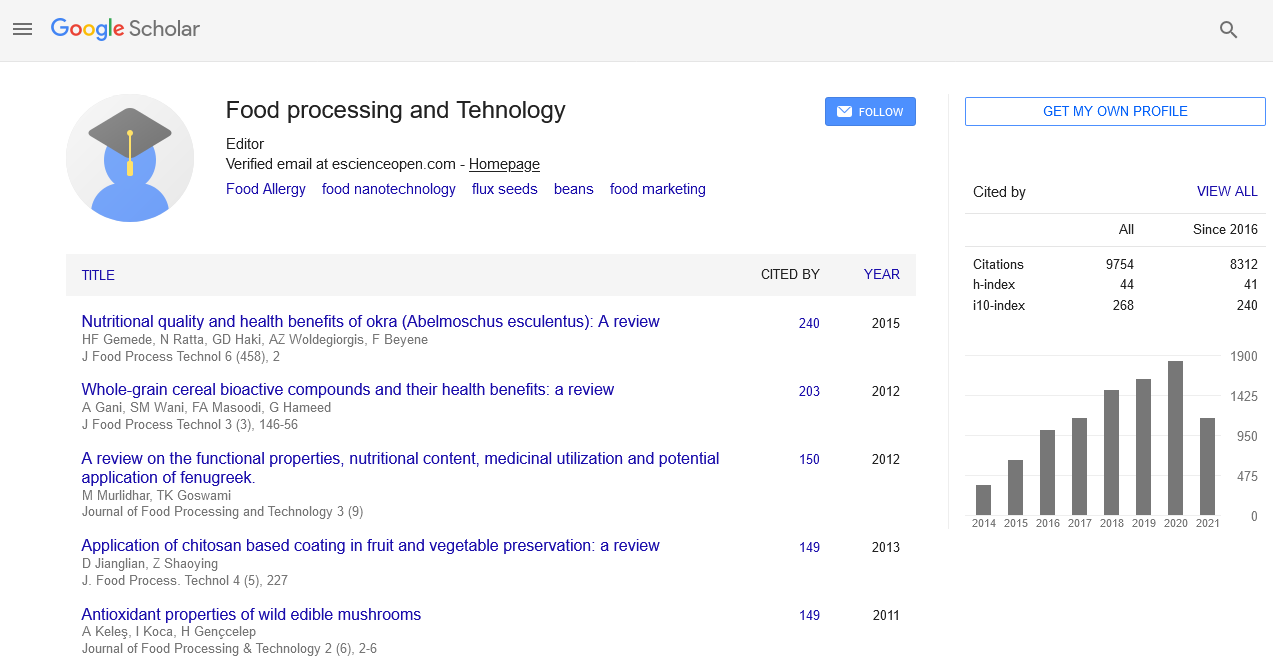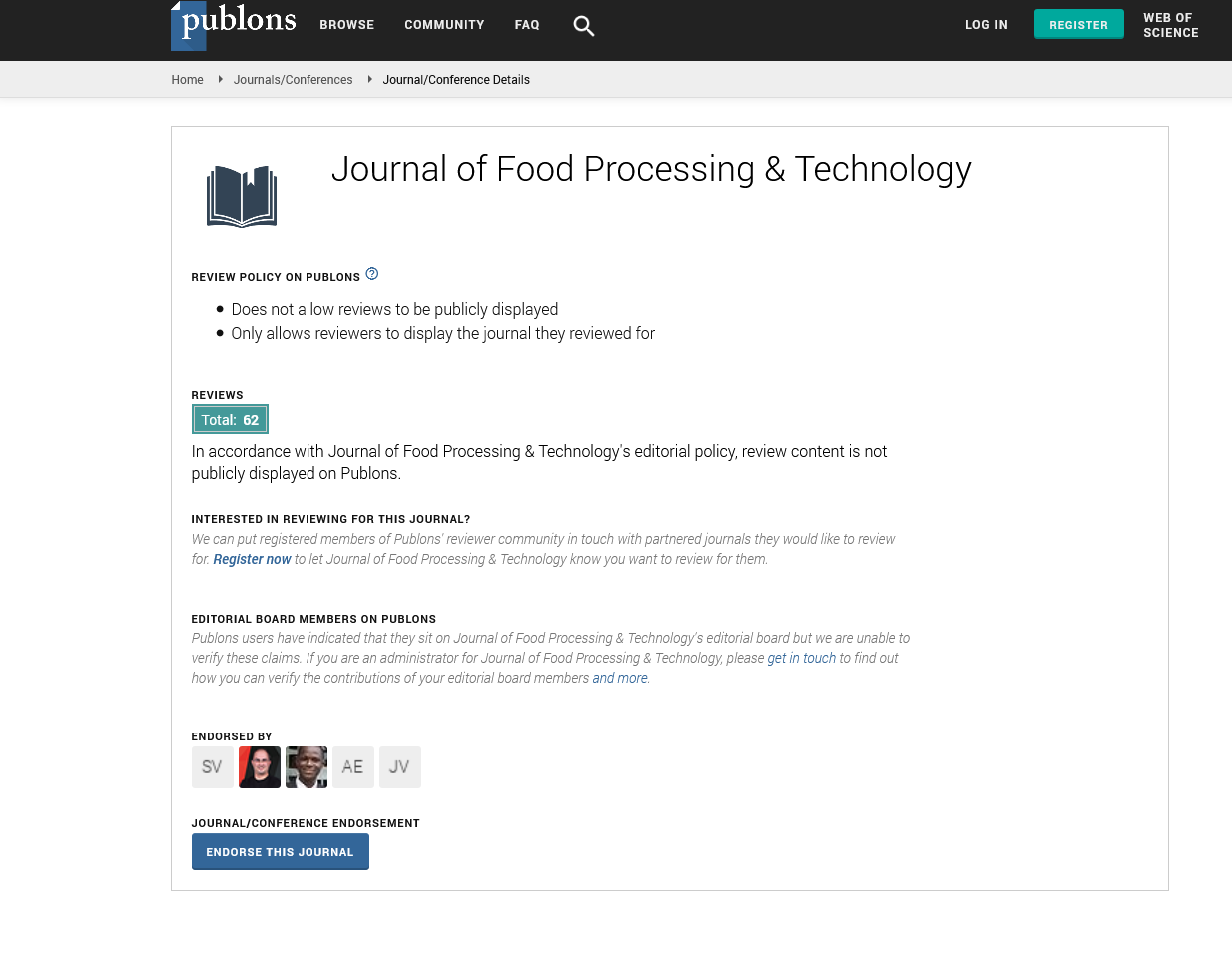Indexed In
- Genamics JournalSeek
- Academic Keys
- JournalTOCs
- China National Knowledge Infrastructure (CNKI)
- Access to Global Online Research in Agriculture (AGORA)
- Centre for Agriculture and Biosciences International (CABI)
- RefSeek
- Directory of Research Journal Indexing (DRJI)
- Hamdard University
- EBSCO A-Z
- OCLC- WorldCat
- Scholarsteer
- SWB online catalog
- Publons
- Euro Pub
- Google Scholar
Useful Links
Share This Page
Journal Flyer

Open Access Journals
- Agri and Aquaculture
- Biochemistry
- Bioinformatics & Systems Biology
- Business & Management
- Chemistry
- Clinical Sciences
- Engineering
- Food & Nutrition
- General Science
- Genetics & Molecular Biology
- Immunology & Microbiology
- Medical Sciences
- Neuroscience & Psychology
- Nursing & Health Care
- Pharmaceutical Sciences
Abstract
Some Physical Properties and Proximate Composition of Ipoli Fruits
In this study, some physical properties desirable to the design and development of handling and processing equipment, as well as the proximate composition of Ipoli fruit was evaluated. Results show that average values of length, width, thickness andgeometric mean diameter were 20.20 mm, 13.91 mm, 6.92 mm and 12.45 mm respectively at a moisture level of 85.2% (wet basis). Sphericity, aspect ratio, surface area and volume were found to be 62%, 70%, 438.27 mm2 and 1227.84 mm3 respectively, while coefficient of static friction on mild steel, rubber and plywood surfaces were found to be 1.294, 1.140 and 1.016 respectively. The nutritional facts also reveal that Ipoli fruit contains 6.2% Carbohydrate, 0.8% protein, 1.7% ash content, 0.18% Vitamin A and 0.42% Vitamin C. It is therefore recommended that Ipoli fruit consumption and cultivation be encouraged and the mechanization of its unit operations be considered.


